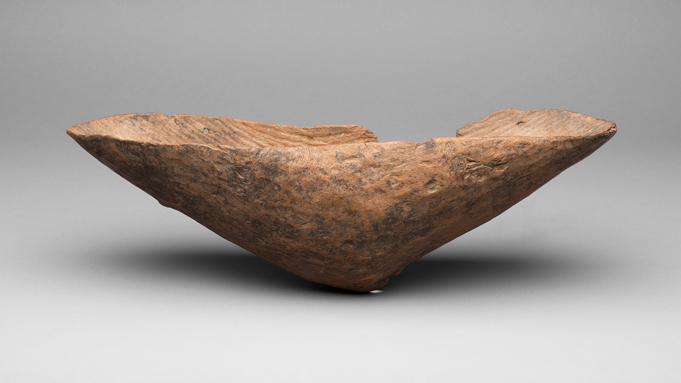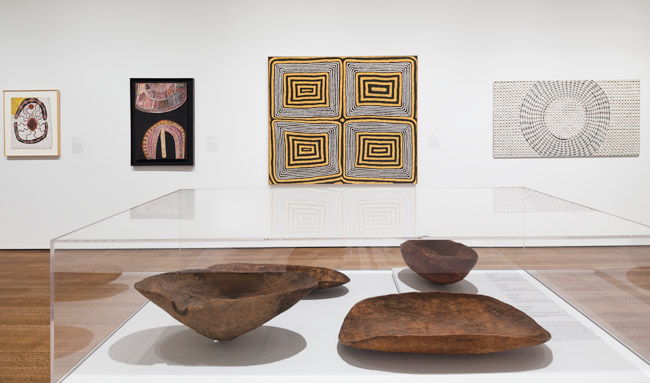“These objects carry knowledge,” said Stephen Gilchrist, the Australian Studies Visiting Curator at the Harvard Art Museums, who organized Everywhen. They also provide a bridge to understanding Indigenous life through art. “Some of the paintings in the exhibition are about the ancestral, an implication that can be very difficult for people to understand,” Gilchrist said. “But the human dimension that is embedded in these objects can help bring the viewer closer to the Indigenous body that is symbolically reconstituted in the exhibition space.”
Gilchrist chose the 13 Peabody objects with an eye toward complementing the exhibition’s portrayal of Indigenous communities in Australia. “With these objects, you’re only getting half the story,” Gilchrist said. “You might encounter them as objects without people. But Indigenous people encounter them as people without objects. So it’s about trying to connect these objects to the people who first used them.”
Many of the objects are reserved for use by one gender, and represent milestones in the lives of the individuals who used them. Belts containing riji (engraved pearl shells) with elaborate designs, for instance, often marked a male’s initiation from boyhood to manhood, said Shawn Rowlands, a former fellow at the Peabody. As part of his fellowship, he catalogued every Australian object in the Peabody’s ethnographic collection. He notes that pearl shells were highly valued as objects of trade among Indigenous communities, attesting to the spread of ideas and artistic practices. “They were exchanged far and wide,” said Rowlands. “They were very important, but they are also just beautiful and very striking. It’s been argued that the designs on some of the engravings were tied to the ocean.” (Rowlands contributed an essay about pearl shell objects to the Everywhen catalogue.)
Other gendered objects in Everywhen include two men’s baskets, cylindrical-shaped woven fiber containers with pigmented patterns. Over the years, the baskets had become misaligned and flattened. Peabody conservators sought to reverse the damage by slightly moistening the interior of the baskets through use of a semi-permeable membrane and dampened blotter paper in order to restore them to their original shape. They also repaired broken fibers on the baskets, ensuring that the objects’ eye-catching designs would be apparent. “It was an opportunity to bring them into a better state for researchers in the future,” said T. Rose Holdcraft, senior conservator at the Peabody.
The coolamons, most often used by women, all show wear with accretions and staining (probably from food or other uses) in their longitudinal grooves. One coolamon had rim cracks that required consolidation and stabilization, while the others did not require significant conservation interventions. All four, however, provide fascinating sources of study. Their worn surfaces testify to their use, while their unique ovoid shapes focus attention on the skill and craftsmanship of those who made them. “They show the trace of an indelible human touch,” Gilchrist said.



